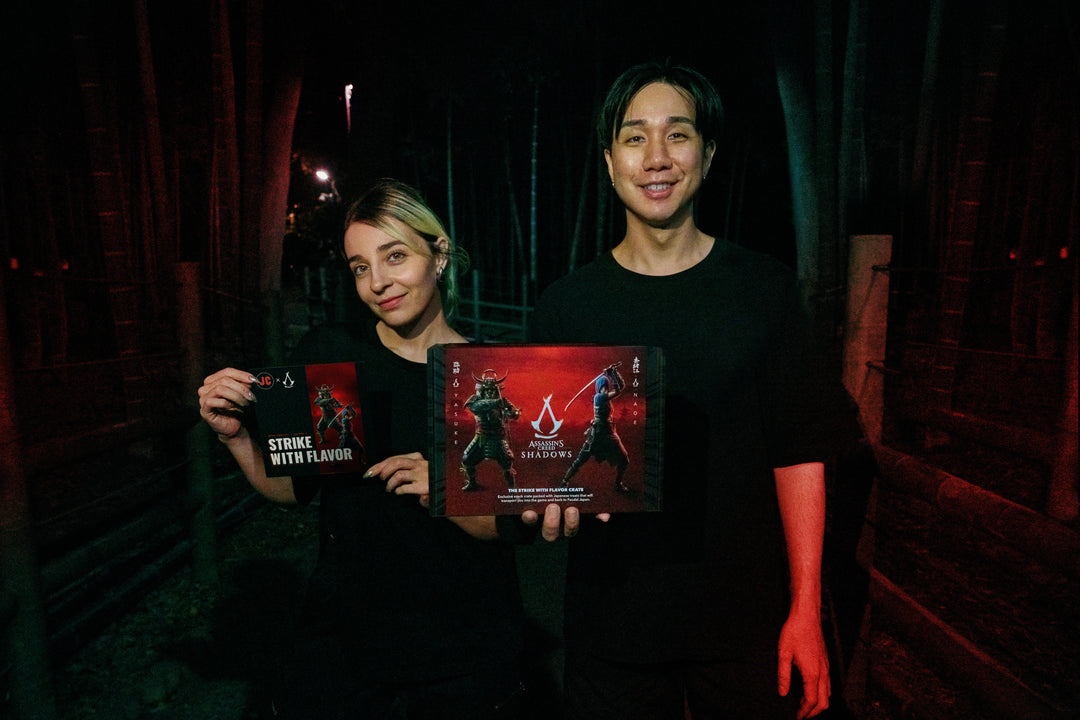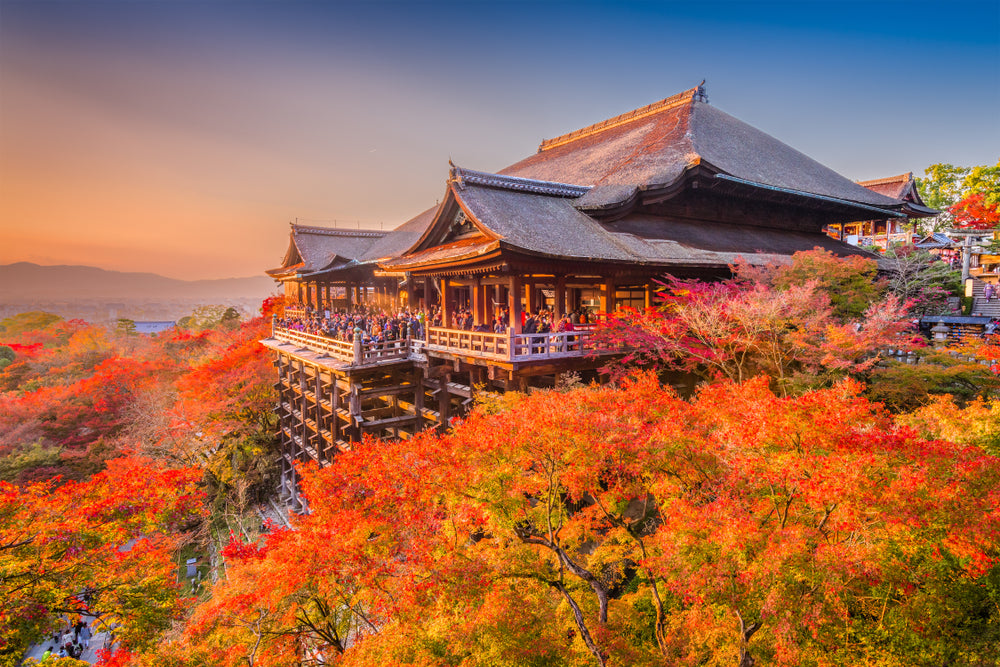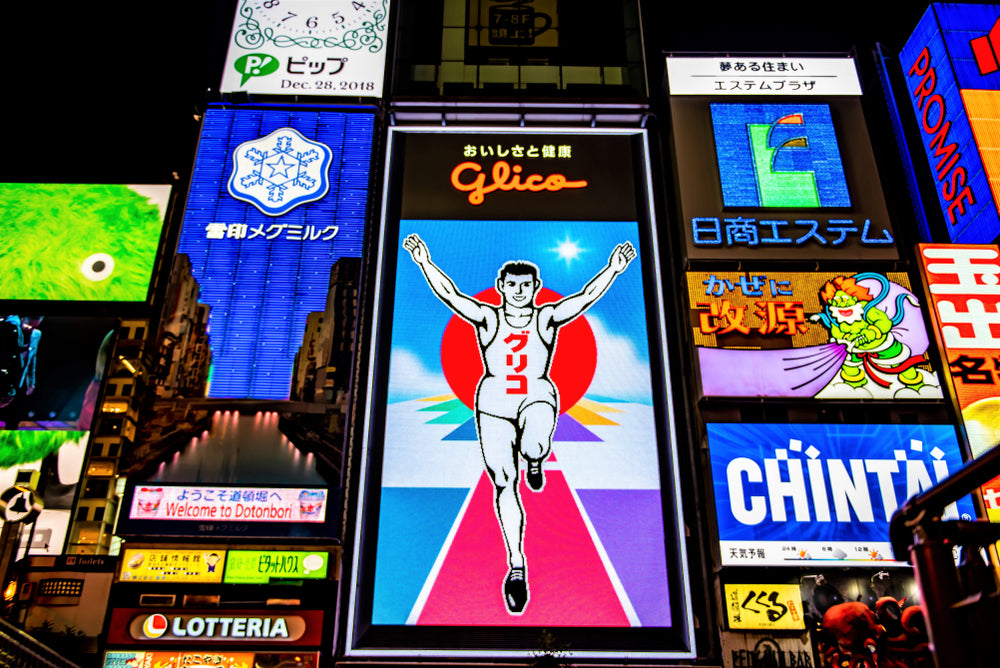Japanese Fortune Sticks

On New Year's Day, you might witness a lot of people lining up to receive a small rectangle of paper if you go to popular shrines and Buddhist temples. People appear to be reading it intently; some are grinning while others are scowling. What exactly are they doing there? They are partaking in a popular year-round activity known as Omikuji, which involves reading fortunes written slips to see how the new year would treat them. Here is a detailed overview of omikuji in Japan.
Let's find out more about omikuji or Japanese fortune sticks.

Omikuji, also known as paper or wooden sticks, are common at Buddhist temples and Shinto shrines in Japan. Omikuji, a literally meaning "sacred lot" in Japanese, have fortunes etched on them; some are positive, and some are bad luck. They are frequently acquired by giving a small offering and randomly choosing from a box in anticipation of good fortune.
Traditionally, omikuji have been written in a lyrical style or poem form. Long time ago, individuals consulted the omikuji as a source of guidance to determine if their life aims would succeed or fail. Many of them are based on Tendai, a Buddhist monk's collection of,'s "100 Chinese Poems."

A candy version of these wooden sticks is included in a past crate called Uranai-Kko Bubble Gum. There are 6 long sticks of gum, each with a different fortune written on it, and the box they come in is creatively designed with unique characters. There are even red sticks deemed as “un-lucky” and will turn your tongue red! Carefully peel back the opening at the top and shake the box to see which fortune you receive. Will it be good luck in your future? A boost in money-related matters? Let us know which fortune you receive!
How to draw an omikuji
First, pray at a temple or shrine.
Before drawing an omikuji, you should first pray at a Buddhist temple or shrine to show reverence to the gods or deity who is venerated there.
Check out Omikuji Corner
There is a store selling omikuji and other lucky charms at the location. You can select your favorite omikuji or try them all at some shrines and temples that provide a variety.
Make your omikuji payment.
When you arrive at the omikuji location, pay your omikuji charge. If you're unsure about the exact price, speak with a Miko, a shrine maiden. Some shrines and temples offer omikuji with a box.
Find out your omikuji result.
A shrine maiden gives you a hexagonal tube box after you've paid. There are omikuji numbered sticks within, and each number is written on the tip. Shake the tube box she provides you until a stick emerges. Tell the shrine maiden your number when you see it written on the stick. She will then hand you a piece of paper with your fortune written on it.
How to understand and comprehend your Omikuji result
Your overall luck will be shown by words like "daikichi" and "shkichi" on the Omikuji result sheet. If you study the article in depth, you can learn more about your luck in other areas, like love, health, and money. Although it's often written in Japanese word, certain well-known shrines and temples that draw many foreign visitors offer omikuji papers that explain your luck in both Japanese and English.
Overall, there are many different luck symbols, and here we discuss the common ones that you can typically discover. More than this chart, several shrines and temples have classified a category of general luck.
A category of overall luck
• Great blessing (dai-kichi, 大吉)
• Middle blessing (chū-kichi, 中吉)
• Small blessing (shō-kichi, 小吉)
• Blessing (kichi, 吉)
• Half-blessing (han-kichi, 半吉)
• Ending blessing (sue-kichi, 末吉)
• Ending small blessing (sue-shō-kichi, 末小吉)
• Curse (kyō, 凶)
• Small curse (shō-kyō, 小凶)
• Half-curse (han-kyō, 半凶)
• Ending curse (sue-kyō, 末凶)
• Great curse (dai-kyō, 大凶)
Fortunes about aspects of one's life
• 方角 (hōgaku) - auspicious/inauspicious directions
• 願事 (negaigoto) – one's wish or desire
• 待人 (machibito) – a person being waited for
• 失せ物 (usemono) – lost article(s)
• 旅立ち (tabidachi) – travel
• 商い (akinai) – business dealings
• 学問 (gakumon) – studies or learning
• 相場 (sōba) – market speculation
• 争事 (arasoigoto) – disputes
• 恋愛 (renai) – romantic relationships
• 転居 (tenkyo) – moving or changing residence
• 出産 (shussan) – childbirth, delivery
• 病気 (byōki) – illness
• 縁談 (endan) – marriage proposal or engagement
What to do after drawing omikuji
You might notice that many pieces of omikuji paper are frequently fastened to a branch of a tree growing in the shrine or temple rather than being thrown away or carried home after being drawn on.
By "tying your want to the life power of the tree," or asking the life energy of the tree in the shrine or temple to assist you in making your wish come true, this is done. To prevent damage to your omikuji, some Buddhist temples and shrines offer a fence in place of a tree for you to tie it to.

You ought to fasten your omikuji to the fence in this situation. When you draw an unlucky omikuji, it is customary to tile it, and when you draw a lucky one, people frequently place it on their wallets. Of course, it's entirely acceptable if you want to take your omikuji home.
The unique variety of omikuji to try
Unique omikuji can be found in some Japanese temples and shrines. A unique omikuji comes in a package with a variety of designs, in contrast to a conventional omikuji, which is simply a small sheet of paper presented to you. Depending on the shrine or temple, these packages come in a variety of designs, and some people wanted to create an entire collection of omikuji specifically for these purposes. Here, we'll introduce a few shrines and temples that sell fun, endearing, distinctive, and adorable omikuji!
Hakushika Mikuji and Shika Mikuji (Kasuga Taisha Shrine)

A beautiful shrine in vivid vermillion, Kasuga Taisha Shrine is located in Nara Prefecture. As one of Japan's World Heritage Sites, it attracts many tourists from all around the country. You can choose between two varieties of omikuji that are shaped like deer. Numerous deer reside in Nara Prefecture, which they revere. Deer are revered and safeguarded as relevant sacred animals because they are thought to be "God's messengers." Not just outside this shrine but also all around Nara Prefecture, you can see deer. The first one costs 500 yen and is a handcrafted wooden deer holding a piece of omikuji paper. The second one costs 600 yen per piece and is an omikuji of a white deer. You should definitely purchase these as your souvenirs because they are both very adorable!

Shimaenaga-mikuji (Obihiro Shrine)

Many tourists travel to Hokkaido's Obihiro Shrine to see its adorable omikuji. The lovely white bird known as the shimaenaga (Long-tailed tit), which is only found on the island of Hokkaido from autumn to spring, is the inspiration for the shrine's famed bird-shaped omikuji. Your omikuji result is included inside this package in the form of a bird. The shimaenaga birds can be seen flying right here at Obihiro Shrine. The round, black eyes with an eyebrow on this omikuji, which are available for 500 yen, are so adorable and will undoubtedly win your heart.

Nagomi-kuji (Hasedera)

Many of Japan's ancient temples are centered at Kamakura, which is in the Kanagawa Prefecture. It is also well-known as a well-known tourist site that draws lots of visitors from around the world. Hasedera presents "Nagomi-kuji," a sweet omikuji in the form of Jizo, which will warm the heart of everybody who sees it, among them. They cost 500 yen each, and Ojizo-cheerful sama's face will undoubtedly put a smile on your face as well!

Rabbit omikuji (Okazaki Shrine)

In Kyoto, Okazaki Shrine is close to Heian Shrine and has caught the interest of rabbit lovers. The rabbit is thought to be a messenger for the local deity as the area around the shrine is known as the habitat for rabbits. Additionally, there are numerous rabbit-themed decorations at the shrine site, including statues and lamps. The omikuji is obviously designed like a rabbit! In Kyoto, try these adorable rabbit omikuji!

Daruma-mikuji (Atago Shrine)

The shrine in Tokyo that honors the god of fire is called Atago Shrine. Being at the summit of the mountain is the shrine's distinguishing attribute. Although this shrine offers a variety of fortune tellers, omikuji, daruma-mikuji is the most well-known. A desire is granted by the Japanese good luck charm known as a daruma. Choose the daruma-mikuji face that appeals to you the most because each one is unique. Draw the paper into the daruma doll from the bottom hole with a little stick to obtain the desired outcome.

The Bottom Line!!
You can purchase an omikuji at any time, but many individuals do it especially for traditions like Hatsumode (the first visit to a Shinto shrine during the Japanese new year) or look for one before significant life milestones like exams. An omikuji chance is coming up, whether you need some advice or are approaching a critical decision.
4 comments
Author Bio







under my magnifying glass i got “disaster prevention hood”
Under my magnifying glass I got “School Nurse”. Haven’t been in school for a decade now and I’m pretty sure you can’t take them with you. lol
[…] strips of gum that are each printed with a fortune. Japan Crate provided a guide to the fortunes here, but they’re still pretty difficult to decode. Luckily, it’s easy to tell whether the fortune […]
Under my magnifying glass, i got a dustpan
Leave a comment